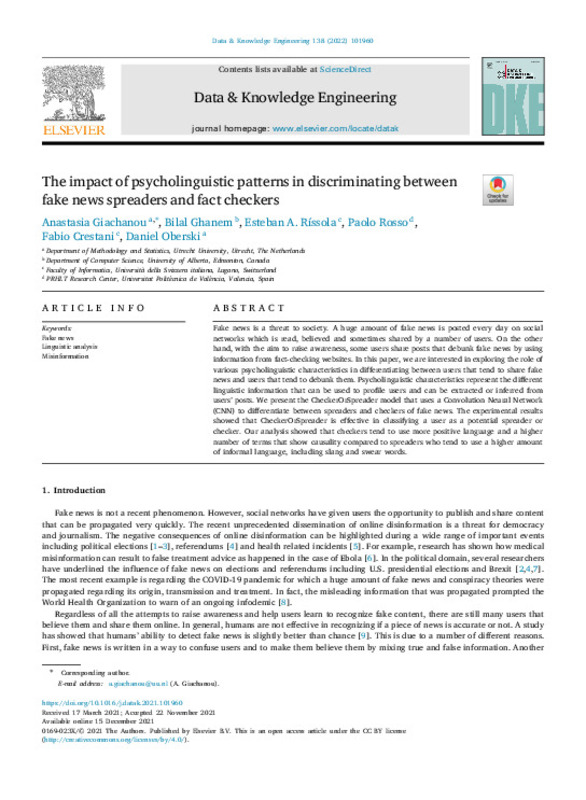JavaScript is disabled for your browser. Some features of this site may not work without it.
Buscar en RiuNet
Listar
Mi cuenta
Estadísticas
Ayuda RiuNet
Admin. UPV
The Impact of Psycholinguistic Patterns in Discriminating between Fake News Spreaders and Fact Checkers
Mostrar el registro completo del ítem
Giachanou, A.; Ghanem, BHH.; Rissola, EA.; Rosso, P.; Crestani, F.; Oberski, D. (2022). The Impact of Psycholinguistic Patterns in Discriminating between Fake News Spreaders and Fact Checkers. Data & Knowledge Engineering. 138:1-15. https://doi.org/10.1016/j.datak.2021.101960
Por favor, use este identificador para citar o enlazar este ítem: http://hdl.handle.net/10251/196716
Ficheros en el ítem
Metadatos del ítem
| Título: | The Impact of Psycholinguistic Patterns in Discriminating between Fake News Spreaders and Fact Checkers | |
| Autor: | Giachanou, Anastasia Ghanem, Bilal Hisham Hasan Rissola, Esteban A. Crestani, Fabio Oberski, Daniel | |
| Entidad UPV: |
|
|
| Fecha difusión: |
|
|
| Resumen: |
[EN] Fake news is a threat to society. A huge amount of fake news is posted every day on social networks which is read, believed and sometimes shared by a number of users. On the other hand, with the aim to raise awareness, ...[+]
|
|
| Palabras clave: |
|
|
| Derechos de uso: | Reconocimiento (by) | |
| Fuente: |
|
|
| DOI: |
|
|
| Editorial: |
|
|
| Versión del editor: | https://doi.org/10.1016/j.datak.2021.101960 | |
| Código del Proyecto: |
|
|
| Agradecimientos: |
The works of Anastasia Giachanou and Daniel Oberski were funded by the Dutch Research Council (grant VI.Vidi.195.152). The work of Paolo Rosso was in the framework of the XAI-DisInfodemics project on eXplainable AI for ...[+]
|
|
| Tipo: |
|









